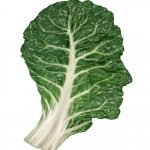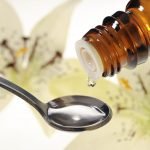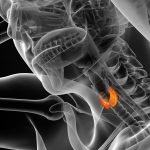Epidemics & Pandemics; Homeopathic Prevention & Management – Part 2
Sharum Sharif, ND
In Part 1 of this article, I covered how and why epidemics are on the rise; how conventional medical approaches alone (including drugs and vaccination) are insufficient in meeting the needs of our species; and how homeopathy is the alternative solution that is so desperately needed. Homeopathy is a solid solution that has passed the test of time and has a high degree of reliability during the present and upcoming epidemics.
World Views of Homeopathy
Let’s discuss how the world views homeopathy. Around the globe, homeopathy is being used by over 500 million consumers and literally hundreds of thousands of physicians and healthcare practitioners of all types (including MDs, NDs, DOs, DCs, NPs, homeopaths, acupuncturists, vets, etc). Homeopathy is widely available throughout most of South America and the Caribbean, with Cuba, Argentina, Columbia, and Brazil leading the way. In Mexico, homeopathy is currently integrated into the national healthcare system. In Brazil, homeopathy has enjoyed government approval since the 19th century, is integrated into its public health system, and continues to be very popular. In Cuba, a country of 10 million people, the government has undertaken many studies of homeopathy at a national level, involving millions of people at a time.
One such study, ordered by the Cuban government and carried out in 2010 by Gustavo Bracho et al, involved homeoprophylaxis (HP) for post-hurricane leptospirosis epidemic control.1 The title of this article is “Large-Scale Application of Highly-Diluted Bacteria for Leptospirosis Epidemic Control.” Note that “highly diluted bacteria” is a term that implies a homeopathic preparation of the bacterium (in other words, a “nosode”) that is the causative agent of the disease, in this case namely Leptospira bacteria. The remedy was administered to 2.3 million people by about 5000 personnel of public health system in Cuba, which included family doctors, nurses, paramedics, and social workers. The conclusion of this government study was the following: “A great study demonstrating how HP interventions might help control epidemics by using highly-diluted pathogens to induce protection in a short time scale.”1
With 100 million people depending solely on homeopathy for their medical care, there are more homeopaths in India than in any other country. There are currently over 200 000 registered homeopathic doctors in India, and an estimated 12 000 more are added every year.2 Numerous studies are conducted in India, many of which are ordered by the government. For example, “[a] study published in 2010 by researchers in Kolkata’s School of Tropical Medicine and the Central Council for Research in Homeopathy showed that the homeopathic medicine Belladonna prevented infection in chick embryos injected with the Japanese Encephalitis virus. The study showed significant decrease in the viral load when treated with the homeopathic medicine Belladonna in different potencies, in comparison to placebo,” stated the principal investigator, Dr Bhaswati Bandopadhyay, the assistant professor of virology.3 Homeopathy is also growing in popularity in Pakistan, Iran, Korea, Japan, and China.
Various Homeopathic Approaches to Epidemics
A variety of approaches using homeopathy for epidemic diseases can be found with good experimental evidence in the homeopathic literature:
- the individualization approach
- combination remedies
- the Genus Epidemicus method
- the Homeoprophylaxis method
Covering the details of each of these methods is beyond the scope of this article. Suffice it to say the classical homeopaths would argue that the Genus Epidemicus (GE) method is not only the best method of management, but also the best preventative tool for epidemics. The term, which was coined by Samuel Hahnemann, MD, denotes the homeopathic remedy that is similar to the totality of symptoms found in the majority of patients suffering in an epidemic disease. It both prevents and cures, depending on when it is administered. In contrast, Homeoprophylaxis (HP) involves the use of highly diluted and succussed (potentized) substances for prevention, given prior to exposure to a disease; some call this homeopathic “vaccination.”
Coming up with the GE (ie, that one blessed remedy that cures most people in an epidemic) can potentially take a while, whereas the HP method can be much more time efficient than the GE method and likely a better solution when attempting to address a large population of people in a short amount of time. In other words, we can use the appropriate Homeoprophylaxis remedy (ie, a nosode) until we’re able to identify the Genus Epidemicus remedy.
What about the dosing of homeopathic remedies? A good rule of thumb, in terms of frequency of dosing using homeopathic remedies for treatment of any disease, in particular epidemics, is the following: Whatever potency you use, use a dose as needed, meaning take a dose only if the effects of the previous dose appear to be wearing off. What about for preventative use of homeopathic remedies (regardless of whether you use a remedy or a nosode)? A good rule of thumb for the preventative dosing of remedies is to use a remedy in, say, the 30C potency once a week if the disease is mild and not rampant, or more often (say, daily or twice daily) if the disease is severe and rampant.
As a side-note, most epidemics start out with flu-like symptoms. We should treat what we see in ill patients during an epidemic ASAP. We do not need to wait until we have a definitive diagnosis for the disease at hand. In other words, for the purposes of finding an effective remedy, we do not have to identify the causative agent (bacterium, virus, etc) to be able to help the patient; we can prescribe solely on the patient’s unique signs and symptoms. Many homeopaths recommend the remedy Aconitum for the initial stages (first 24 hours or so) of most respiratory illnesses. (Note: I often recommend Aconitum 30C twice daily for the first 24 hours of the common cold or the flu.) Once the patient passes the initial stage of the illness, then we must prescribe based on the specific signs and symptoms the patient is experiencing, not based on the name of the condition.
In my presentation for the AANP in August of 2019, I discussed common epidemic diseases throughout the world and their homeopathic treatment in alphabetical order. You can find the presentation on my website, www.DrSharif.com. The epidemic conditions covered include: HIV/AIDS, chickenpox, chikungunya, cholera, dengue fever/break bone fever, dengue hemorrhagic fever, diarrheas (epidemic diarrheas), Ebola virus, flu (influenza), hepatitis, leishmaniasis and leishmania/HIV co-infection, Lyme disease, malaria, measles, meningococcal disease, mumps, plague, pneumonia, polio, rubella, scarlet fever, shock/fear/anticipation during epidemics, smallpox, tuberculosis, typhoid fever, typhus, vaccine-related injury prevention, yellow fever, and Zika virus. In this article, I am adding an exclusive section on homeopathic management of COVID-19.
Homeopathic Support for COVID-19
DISCLAIMER: At this point, homeopaths cannot claim that they have a cure/treatment OR a verifiable method of prevention for COVID-19. It’s imperative to realize that homeopathy does not have any remedies for any specific conditions (including COVID-19) per se. In homeopathy, we treat people, not diseases. Regardless of the name of the disease, based on the person’s unique set of signs/symptoms, we find a remedy that best matches the case. Lastly, it is important to mention to the patient that no therapy, including homeopathy, is 100% effective in 100% of the cases.
Homeopaths in various countries have thus far been able to help COVID patients with their various signs and symptoms. Clinical trials of homeopathy for COVID-19 are underway across the globe. “Anticovid,” the open-access platform that gathers all available information regarding global clinical trials for SARS-CoV-2, lists 10 clinical trials assessing the potential of homeopathy in the treatment and prevention of COVID-19 symptoms.4 Some of them are observational, while others are controlled, randomized, and double-blinded. These 10 clinical trials are being conducted in Brazil, China, Cuba, India, and Iran. You can find all 10 trials at: https://tinyurl.com/y4ztzk4j. Hopefully, with the emergence of more scientifically validated studies throughout the world, our possible ambivalence will be replaced with a higher level of confidence in our remedy selection.
Since March 22, 2020, the American Institute of Homeopathy (AIH) has been fastidiously gathering data from hundreds of homeopaths around the world in order to identify which remedy (or remedies) is/are most suitable for supporting COVID-19 patients. They looked at both COVID-19 lab-confirmed cases and suspected exposure cases among the data. Based on this anecdotal evidence from AIH (as opposed to a rigorous scientific trial), the remedy Bryonia alba has so far emerged as the most helpful remedy. The next 3 most prescribed/helpful remedies among those submitted cases that had a positive clinical outcome have been Gelsemium, Arsenicum album, and Phosphorus, listed mostly in order of priority. This represents the latest harvest from the tireless work and observations of numerous homeopaths (and other people involved) over the course of several months now. Note that, similar to previous pandemics, the top remedies can change from one part of the world or country to another. And, of course, the top remedies can most definitely change over time as the virus evolves. Finally, it’s worth highlighting an article on COVID-19 written by Dr Manish Bhatia of India on March 31, 2020.5 In his article, Dr Bhatia lists Bryonia alba as his top remedy of choice (at that time) for COVID-19. Note that this is the same remedy appearing at the top of AIH’s list of remedies for COVID-19.
Based on my own experience with COVID-19 patients, if the patient has underlying chronic conditions, her homeopathic care can be significantly more challenging, and her recovery may take much longer. Additionally, some patients appear to need more than 1 remedy throughout the course of their illness to fully recover. They might have to go back and forth between 2 different (or possibly additional) remedies, say 2 “acute” remedies, or an “acute” remedy alternating with a “chronic” (or even “constitutional”) remedy, for a variable number of days. This subject is beyond the scope of this article. The international homeopathic community is continuously learning about COVID-19, and the interested reader is advised to keep up with the latest findings coming from the experts in the field.
Note: The management of COVID-19 patients can be extremely complicated and requires professional homeopathic care. For example, most patients seem to benefit from the higher potencies (such as 200C) in water every few hours for at least a couple of weeks and up to a few months, versus our typical dosing of 200C dry pills during most acutes (such as an acute flu), which is 1 dose once or twice a day for a few days.
Homeopathic “Prophylaxis” for COVID-19?
The best way to prevent catching any infection is to be in good health. Sufficient high-quality sleep, a healthy diet, effective stress management, regular aerobic exercise, basic nutritional supplements, immune boosting, and antiviral herbs, such as elderberry, are all highly recommended. I believe that the best homeopathic remedy for the prevention (and sometimes treatment) of any illness is the person’s unique “constitutional” remedy. If you do not know your own “constitutional” homeopathic remedy, you should consult with a homeopath. A person’s “constitutional” remedy should boost their overall health, helping them to become more resistant to catching any infectious disease. There are times, however, when we need to use an “acute” (vs “constitutional”) remedy for prophylaxis purposes – a remedy that appears to be helping the majority of patients affected by an epidemic/pandemic. Determining whether we need to use an acute versus a constitutional remedy for the prevention and/or treatment of any condition is beyond the scope of this article.
Note: In general, you should always consult with a homeopath about your particular circumstances (ie, your overall health and where you live) in order to determine what remedy to take, when to take it (for any purpose), and the best potency.
Closing Comments
In his book, Epidemics: Hate and Compassion from the Plague of Athens to AIDS, Samuel Kline Cohn, Jr, traces epidemics’ socio-psychological consequences across time, and draws the radical conclusion that epidemic diseases have more often than not unified societies across class, race, ethnicity, and religion, spurring self-sacrifice and compassion.6 This is a conclusion that surely brings some glimmer of hope in the midst of the current pandemic as well as future feared pandemics around the corner.
I would like to end on a definite positive note here: Homeopathy will always be ready to help, no matter what kind of deadly disease we are dealing with in our world. As Dr Andre Saine stated in his 2017 presentation on epidemics, “Throughout recorded history, the survival of human societies has been threatened by epidemics, and regardless of the advances in medicine, prevention or biotechnology, there will always be epidemics, and homeopathy will always be ready to rapidly intervene.”
After extensive research on the subject of epidemics for a few years now, I have concluded that many (if not all) of these epidemic diseases can be prevented by clean water, clean food, a clean-living environment, and by peaceful coexistence with one another and with nature. Contributing to the above causes should be our goal as human beings inhabiting this beautiful planet. According to James T. Kent, MD, an American physician who is looked upon as one of the best teachers and exponents of the homeopathic school of America, “Things will grow brighter as minds are brought together and men think harmoniously. The more we keep together the better, and the more we think as one, the better.”
References:
- Bracho G, Varela E, Fernández R, et al. Large-scale application of highly-diluted bacteria for Leptospirosis epidemic control. Homeopathy. 2010;99(3):156-166.
- Ghosh AK. A short history of the development of homeopathy in India. Homeopathy. 2010;99(2):130-136.
- Birch K, Whatcott C. The Solution: Homeoprophylaxis: The Vaccine Alternative. [Self-published]; 2014.
- Anticovid, by Inato. [Internet search]. Available at: https://covid.inato.com/search?query=homeopathy&page=1https://covid.inato.com/search?query=homeopathy&page=1. Accessed July 31, 2020.
- Coronavirus – Analysis of symptoms – treatment and prophylaxis. Dr. Bhatia’s Asha Homeopathy. Available at: https://www.doctorbhatia.com/treatment/coronavirus-covid-19-symptoms-homeopathic-remedies-for-treatment-and-prophylaxis/?v=7516fd43adaa. Accessed August 1, 2020.
- Cohn SK Jr. Epidemics: Hate and Compassion from the Plague of Athens to AIDS. Oxford, England: Oxford University Press; 2018.

Sharum Sharif, ND, is a 2003 graduate of Bastyr University. He has a primary-care practice in Kent, WA, and is an affiliate clinical faculty at Bastyr University. He gave a talk on the subject of “homeopathic prevention and treatment of epidemics and pandemics” at the 2019 AANP convention. (You can read the PowerPoint of his talk and/or watch its video presentation on his website: DrSharif.com.) Dr Sharif has authored a book on homeopathy titled Visual Homeopathy, and has an extensive website for teaching constitutional homeopathy: www.VisualHomeopathy.com.










